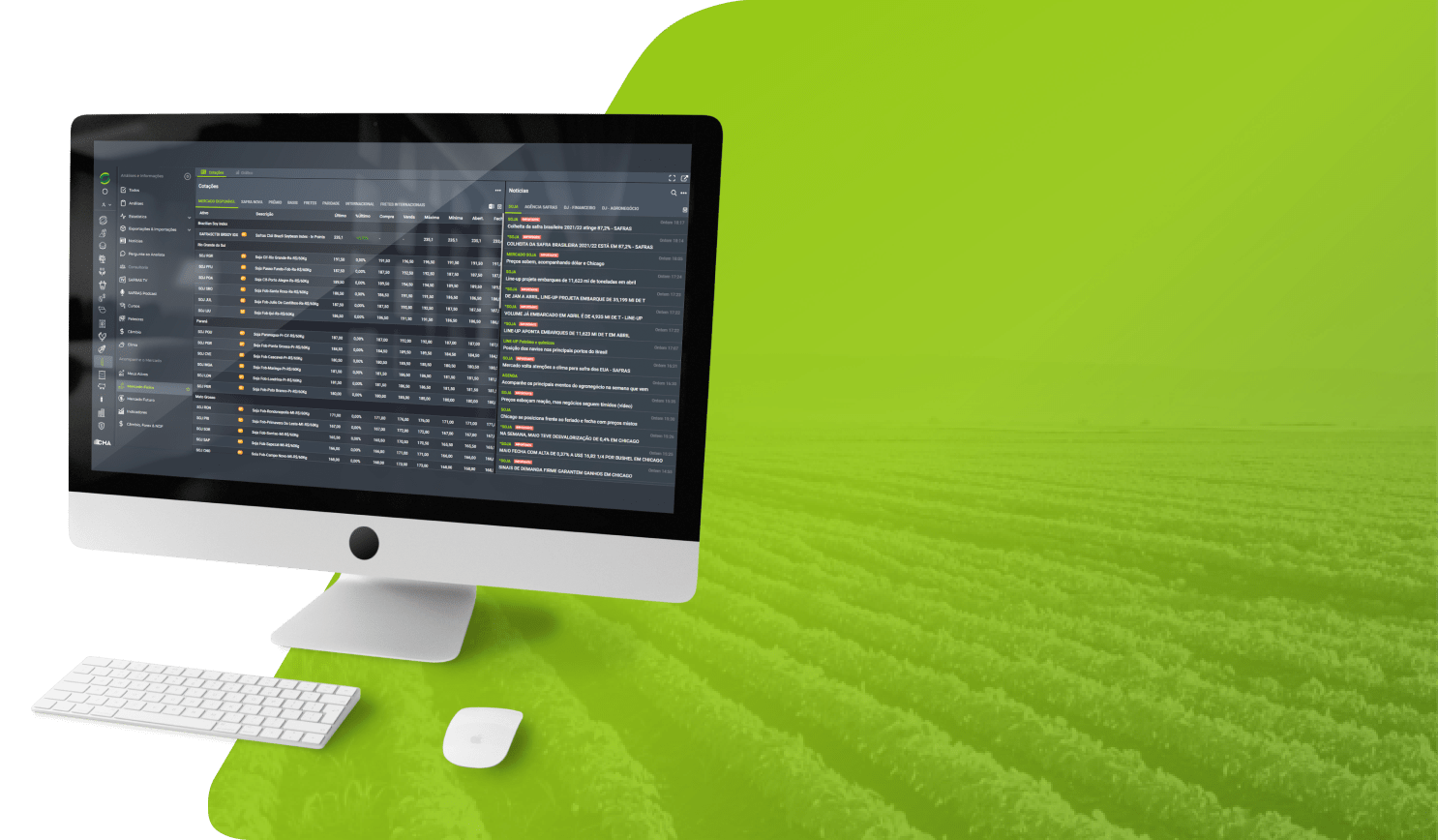Porto Alegre, June 27th, 2024 – The first semester is coming to an end, a positive period for the sector, with pig farmers working with positive margins. It is worth pointing out that the average price of live pigs in the Center-South of Brazil has been moving sideways, and between January and April below the levels registered in the same period of 2023 due to the moderate increase in both supply and slaughter. In May and June, prices managed to find greater support, with signs of more adjusted supply, which brings positive expectations for the near future, which will be described below. If prices moved sideways, the justification for the positive margins in the first half of the year was mainly due to the decline in production costs, with soymeal and corn at more affordable prices, reflecting an ample supply, with crops at a good level.
The attached graph shows the evolution of the average price per kilogram of live pigs in Santa Catarina (the largest national producer and exporter) against production cost. Profit can increase, considering the variables present in the market, including a slowdown in the slaughter rate, strong exports, higher pork consumption due to seasonal effects, and stable production costs.
Slaughter must reach a new record this year, however, the important point is that it should not advance explosively, and as a result, excess supply compared to last year could be absorbed with increased exports and possibly greater domestic consumption. According to the latest projection by SAFRAS & Mercado, Brazil must slaughter 49.202 mln head in 2024, up 0.66% from the 48.880 mln head registered in 2023. From 2022 to 2023, there was an increase of 2.35%.
Production in 2024 is estimated at 5.370 mln tons, compared to 5.272 mln tons last year, 1.9% higher, with a slight increase in average pig weight, which is natural, considering the lower cost.
As for exports, as mentioned in our last biweekly report, Brazil has great positive points, such as attractive prices, qualified product, the loss of global market share of the European Union due to its declining herd. The strengthening of the dollar, which surpassed BRL 5.40, is also a positive factor, making Brazilian pork very competitive on the international market. The price of a ton exported by Brazil is still depressed, mainly due to weak Chinese performance. However, the devaluation of the real is beginning to favor the industry’s margin in conversion.
The price per ton no longer has much room for lows, considering that in the medium term the supply in China should balance itself and, as soon as its internal demand advances, purchases may be more active, in a scenario that is more likely to occur over the course of 2025. It is worth noting that the Chinese economy is slowing down, impacting consumer confidence. The local government is adopting expansionist measures, involving monetary policies, and injecting liquidity into the real economy, but more concrete effects take time to occur.
Furthermore, Brazil is managing to diversify sales, advancing into important markets, such as the Philippines, Japan, Mexico, Chile, and others. SAFRAS estimates that this year’s exports should reach 1.236 mln tons, an increase of 3.2% compared to 1.198 mln tons in 2023.
Returning to the evolution of the Brazilian domestic market, pork consumption tends to increase in the second half of the year, allowing the chain prices to find room for good appreciation, taking the premise of a leaner availability scenario due to good exports. Winter is approaching, a season where domestic demand historically gains strength. Right after the season, there are preparations for consumption for the holidays, Christmas and New Year, periods when the population is also capitalized with the thirteenth salary and other bonuses. It is also worth considering that the level of unemployment in the country is falling, that is, there are more people willing to spend in restaurants, coffee shops and so on. On the other hand, there are also factors that can negatively impact pork consumption, starting with the price level of competing/substitute proteins of animal origin, chicken and beef, which have good availability this year. Another issue is the risk of inflation, which could accelerate again and impact consumer confidence and the choice decisions of households if political and economic disruptions persist.
Finally, the cost of animal nutrition tends to evolve without any major shocks during the second half of the year, given the “photo” of the moment. Corn is on a downward trend in Brazil at the end of June, with agents’ expectations surrounding the harvest of second-crop corn. However, there are some variables to be monitored closely and that could affect the situation in the coming few months, such as the evolution of the US corn and soybean harvests, the behavior of the exchange rate, and the outlook for the next Brazilian crop. So far, the US climate remains favorable for crop conditions in the 24/25 season.
Copyright 2024 – Grupo CMA





